by Craig Brelsford
Founder, shanghaibirding.com
Now my involvement in the discovery of Himalayan Thrush was on this wise:
In June 2014, my partners and I drove 36 hours, including one stretch of 24 straight hours, covering 1500 km (930 mi.) to get from Emeishan in Sichuan to the Dulong Gorge in Yunnan. The reason? Per Alström was in the Dulong Gorge and was working on an exciting project, a project to which he said I might be able to make a small contribution.
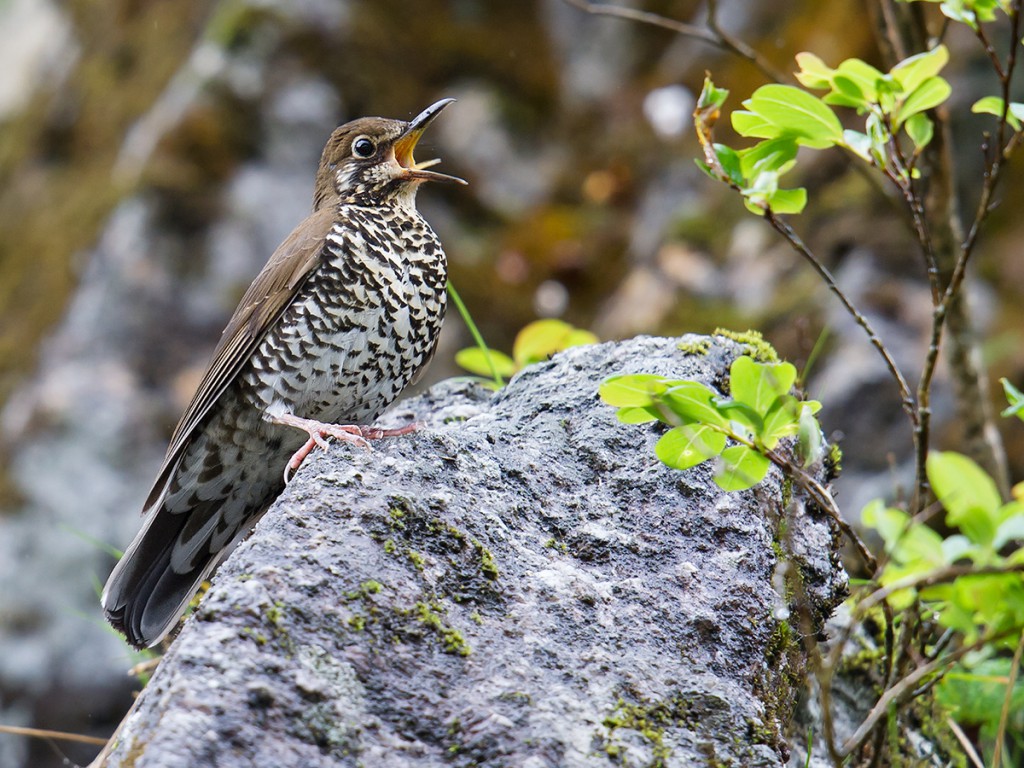
We finally met up with Per and his team on the road into the Dulong Gorge. There, Per transferred to me a recording of a species new to science, Himalayan Thrush Zoothera salimalii.
Little did I know that I was on the cusp of something big.
At the time, I did not know that the species was Himalayan Thrush; like any normal birder, I took the species to be Plain-backed Thrush. Per could only divulge that he was working on possible splits to Plain-backed Thrush, and could I please try to get a shot of a free “Plain-backed”? All his images, he said, were of captured birds, and he wanted shots of birds living their natural life. “I’ll do everything I can to get those photos!” I said. Per then left the Dulong Gorge, and my team entered the valley.
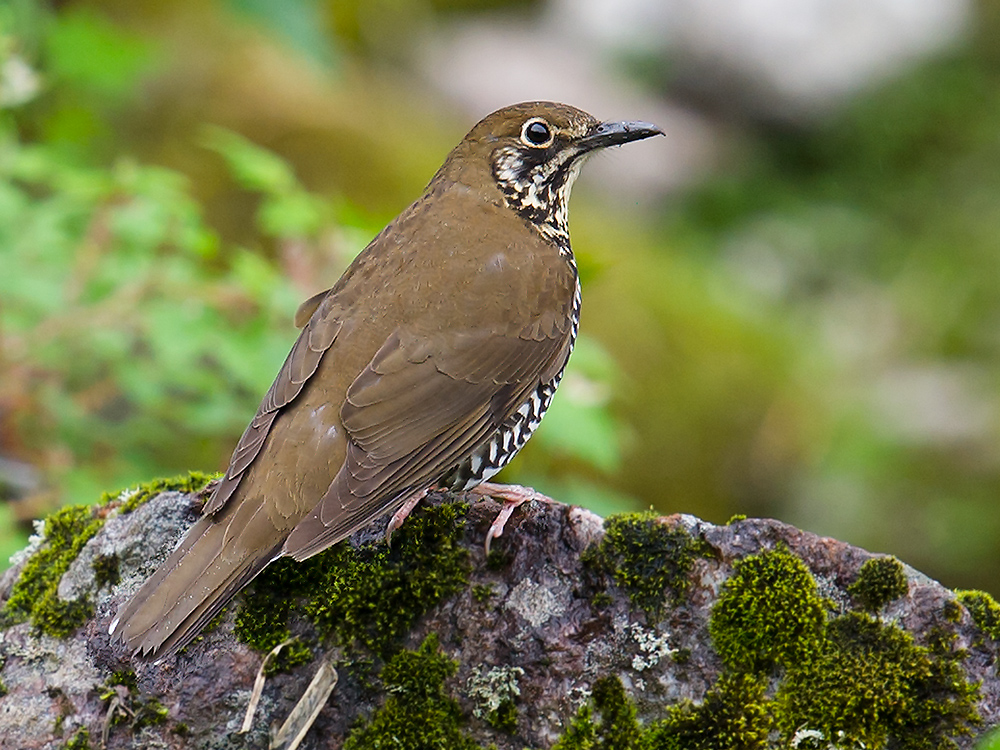
Rain rain rain for days. Finally, a 45-minute window of dry weather. I’m at the spot Per indicated, elev. 3380 m (11,090 ft.). I play Per’s recording. Attracted by the recording, a Himalayan Thrush appears within minutes, and I get photos as well as recordings of the thrush’s song. What a payoff!
Now my photos figure in the article Per and his co-authors have written on Himalayan Thrush, Sichuan Thrush Zoothera griseiceps, and Alpine Thrush Z. mollissima (Z. mollissima was formerly called “Plain-backed Thrush” in English but in the wake of the new discoveries takes the name Alpine Thrush). Himalayan Thrush is completely new to science, and Sichuan Thrush has been elevated to species status (having been considered a ssp. of Z. mollissima). A fourth putative taxon, “Yunnan Thrush,” requires further study.
I’m proud to have played a minor role in Per and co.’s major discovery!
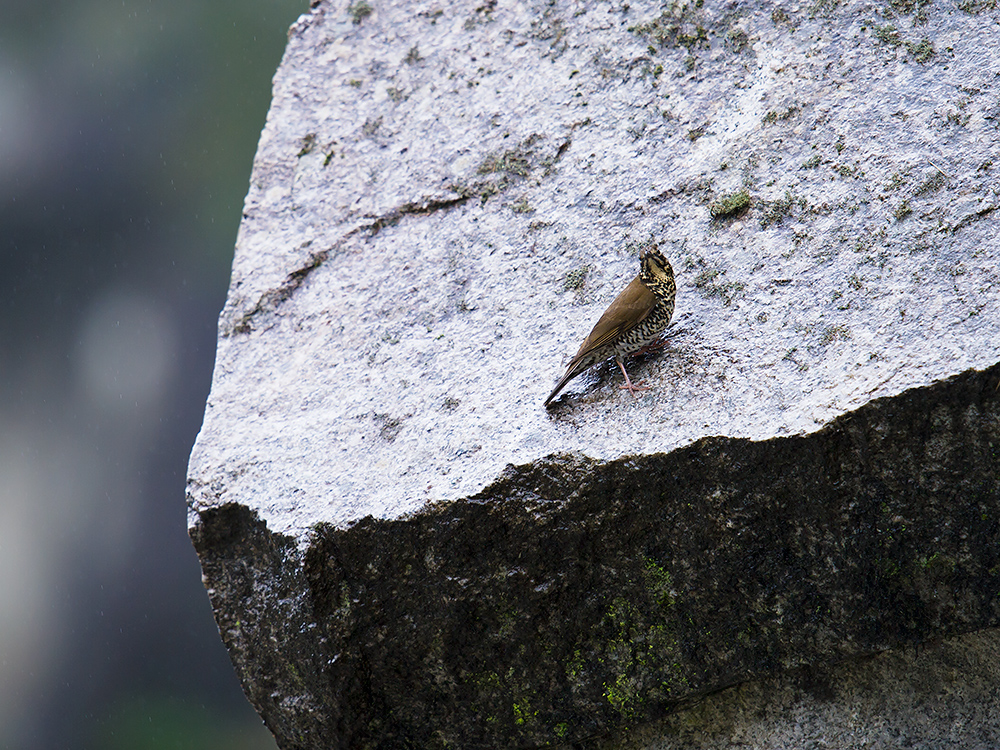
WHAT IS ‘NEW TO SCIENCE’?
In the case of Zoothera salimalii, when we say the species is “new to science,” we are not saying that no human being had ever seen the bird before. Himalayan Thrush is locally common in its range, which extends from Sikkim in India to northwest Yunnan; thousands of birders and non-birders have seen it. “New to science” means that those observers did not understand its true nature. We did not understand that it is a species; if we thought about it at all, we assumed that any Z. salimalii we were seeing was just another Plain-backed Thrush Z. mollissima.
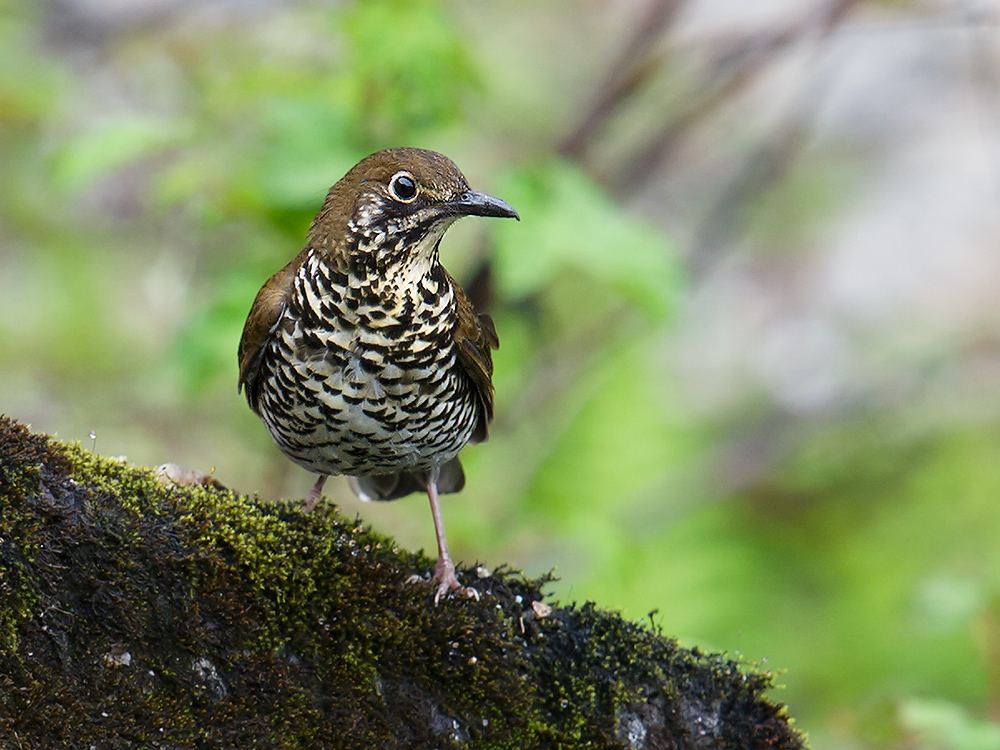
Per and his team discovered that, hidden within what was considered to be a population of Z. mollissima was an entirely different bird, separated from Z. mollissima by time (3-5 million years of evolution), habitat (Z. mollissima Alpine Thrush breeds higher than Z. salimalii Himalayan Thrush), song, and morphology.
The latter two characteristics are particularly surprising and point to the difficulties of birding in the Himalayan region. Per and his team did not need a microscope to begin to see that Himalayan Thrush is different from the other species in the Plain-backed Thrush complex. All they needed to do was look and listen closely. Yet for generation after generation, this straightforward analysis was not performed. This is not surprising, considering the ruggedness of the area in which these thrushes live and its sparse population.
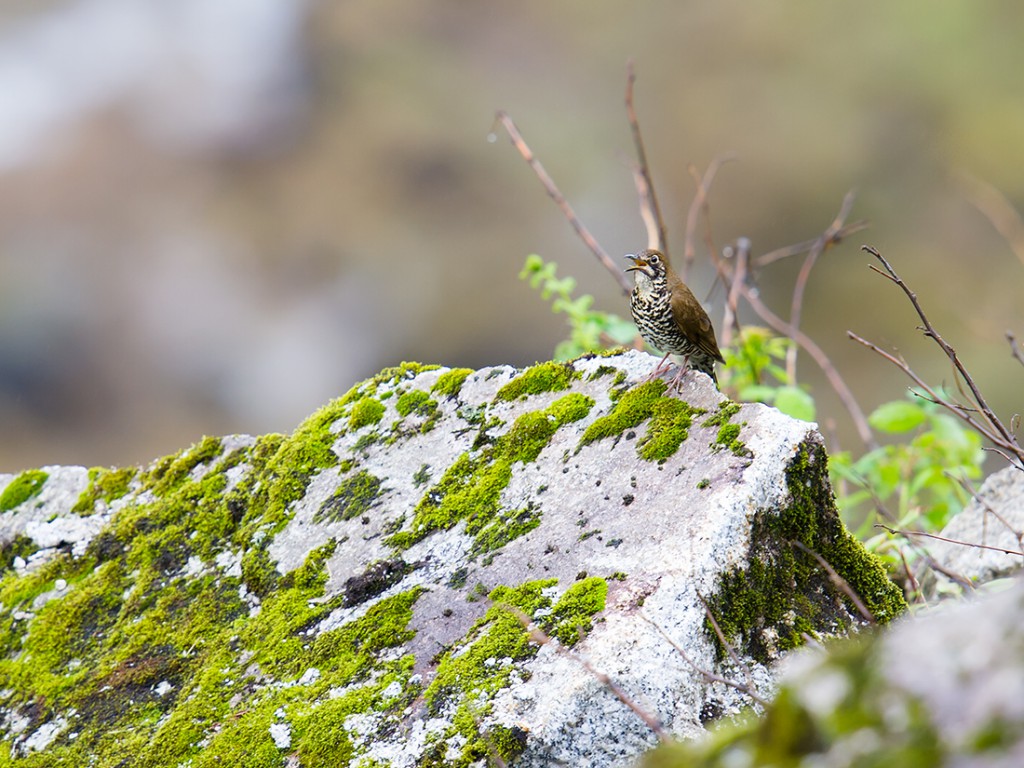
Once Per had examined Plain-backed complex birds in the hand and through photos, he found a whole series of visible differences. Per et al. write:
Compared to Z. mollissima, Z. salimalii has a noticeably longer and deeper bill, with more arched culmen and longer hook, and the lower edge of the lower mandible is more arched (vs. straight); bill usually completely or almost completely dark including base of lower mandible, whereas the base of the lower mandible is usually pale pinkish or yellowish in Z. mollissima (though may appear mainly dark also in Z. mollissima). …
Most individuals of Z. salimalii have a thin whitish supraloral stripe over thick blackish lores, and a very dark subocular/moustachial area, more or less connected to the dark lores, compared to more diffuse pale supraloral and weak “salt-and-pepper” lores and subocular/moustachial area of Z. mollissima. Also, Z. salimalii usually shows less extensively pale-mottled ear-coverts than in Z. mollissima, especially on the upper part, and lacks or has only a very ill-defined dark spot on the rear ear-coverts, while Z. mollissima usually shows a distinct dark rear ear-covert patch. Z. salimalii is usually ruddier in color above than Z. mollissima. … Z. salimalii has a narrow, almost unmarked golden-buff throat (whiter when worn) bordered by strong black malar, while in Z. mollissima the throat is usually whiter and generally more heavily marked (often much more so) and less strongly bordered by more diffuse malar stripes. Z. salimalii has the claws paler than the toes, lacking dusky areas, while in Z. mollissima the claws are at least partly darker than or similar in color to the toes. The legs of Z. salimalii are pinkish, while those of Z. mollissima are usually brighter and more yellow- or orange-tinged.
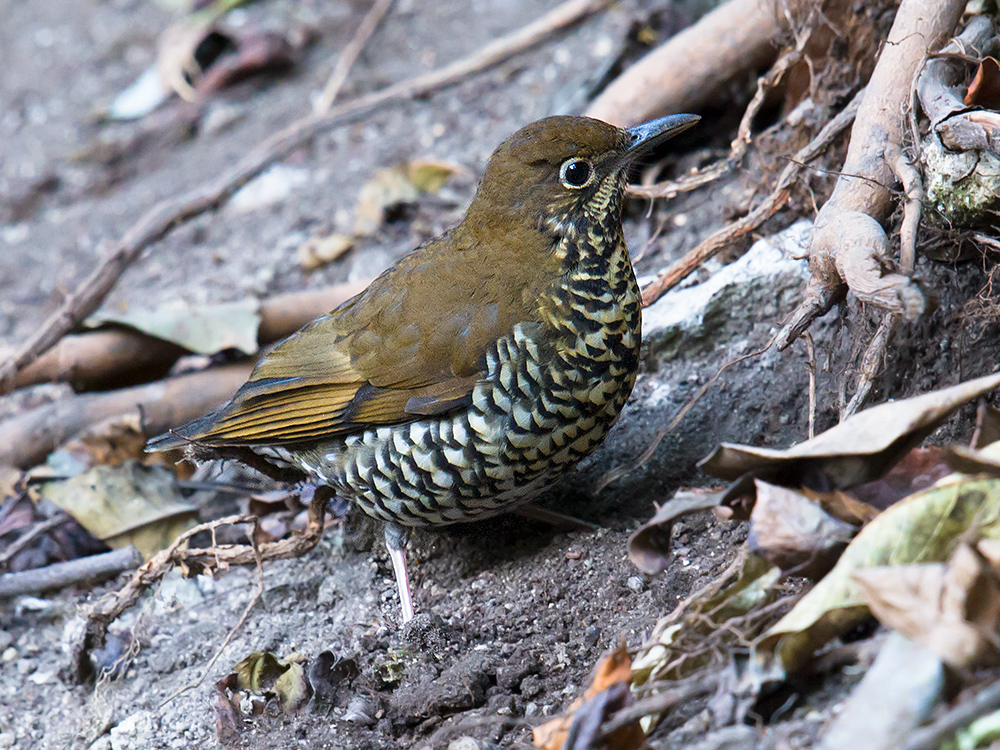
So adept became Per at discerning the morphological differences of the various Plain-backed species, he was able to determine, by photos alone, that a “Plain-backed” I had found in Yunnan in February 2014 was also Himalayan Thrush. Per used my February 2014 photos along with my June 2014 photos in his article.
The song of Z. salimalii also contrasts markedly with that of Z. mollissima, Per et al. write. They note the “mainly rasping, grating, scratchy, cracked voice” of Alpine Thrush and the “more musical … ‘thrush-like'” song of Himalayan Thrush. Indeed, according to the article, the germ of the process that led to the discovery of Himalayan Thrush was Per standing in India and simply listening to Himalayan Thrush, remembering the similar song he’d earlier heard in Sichuan of what is now called Sichuan Thrush, and contrasting those sweeter songs with the scratchier song of Alpine Thrush. Here we see Per, the scientist famous for discovering new species according to complicated DNA research, relying not on microscopes but on good old-fashioned birding skills!
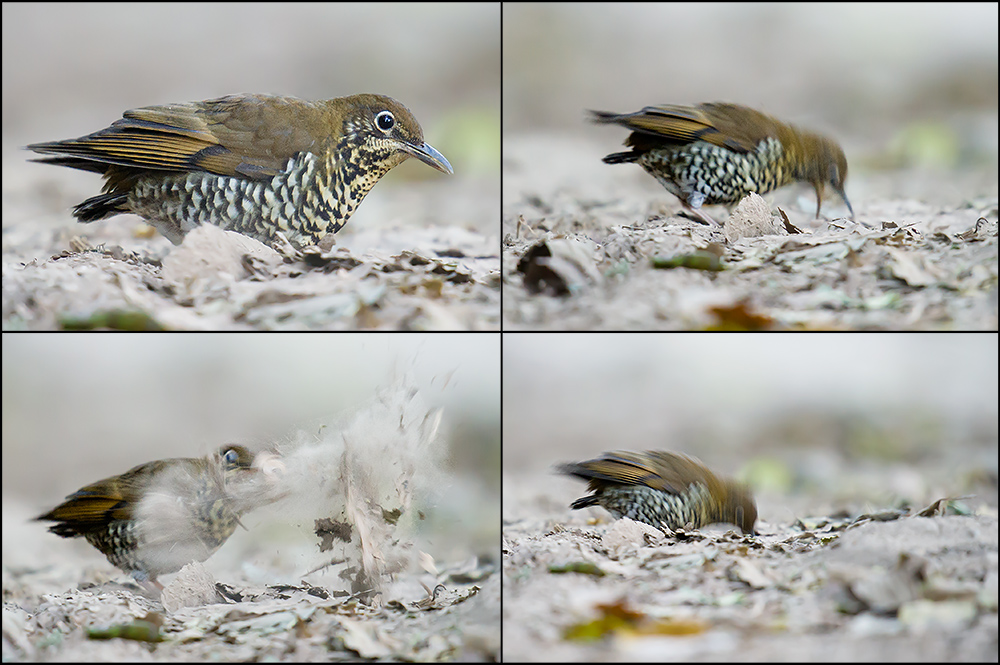
Below, some of my recordings and videos of Himalayan Thrush.
Sound Recordings, by Craig Brelsford
Video (all taken by Craig Brelsford at Baihualing, Gaoligong Mountains, western Yunnan, 4-5 Feb. 2014)
Featured image: Craig Brelsford (L), Brelsford’s partner Jon Gallagher, and Per Alström (R), in the Dulong Gorge, Yunnan. The insets show Himalayan Thrush Zoothera salimalii, which Alström was there studying, and photos of which Brelsford later acquired. Alström’s research led to the recognition of Himalayan Thrush as a species, and Brelsford’s photos were used in Alström’s paper and published in news outlets worldwide. (Huáng Xiǎo Ān [黄小安])

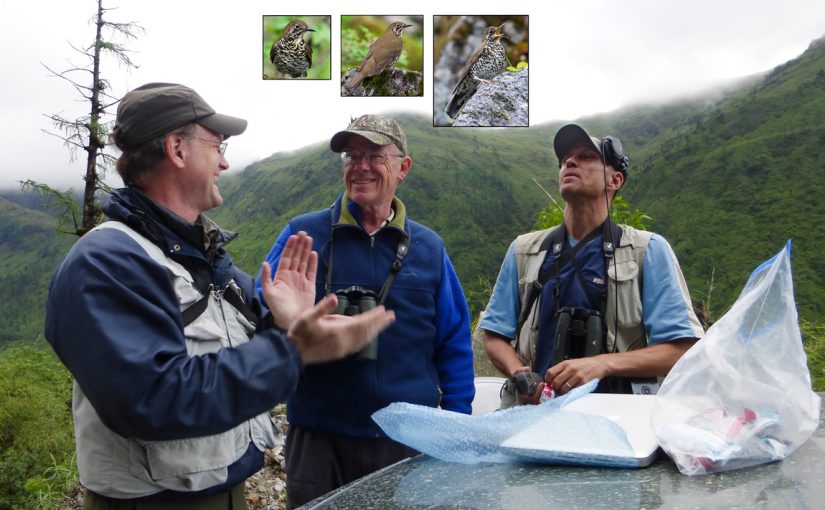
Very interesting, Craig. I met Per when we were in southern Sichuan in 2013, he told me he was working on splitting the Zootheras but I didn’t know what the results would be.
Nice shots !
There’s always something new to learn in Chinese birding.
Great write-up, Craig! Your investment in time and effort really paid off on this one.